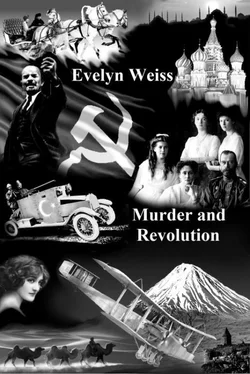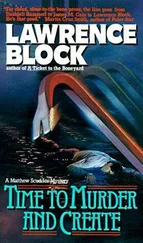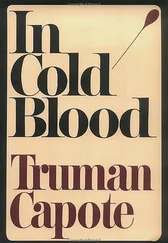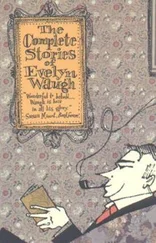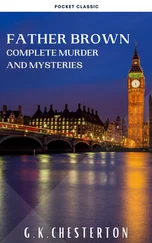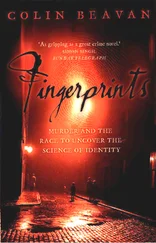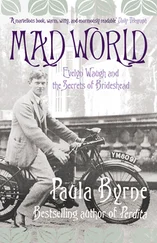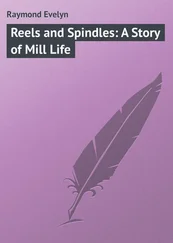Axelson suppresses a snort at this nonsense.
“The brother pulled and strained his utmost at the rock, but he could not lift it. When he went home and told his mother, she sent the middle brother, but he couldn’t lift the stone either. Finally in despair she sent the youngest brother, Ivan, although she thought he was useless and simple-minded.
Ivan wandered through the village and out into the fields. Idly, he kicked a stone lying in his path. Where the stone had been, the ground opened into a deep chasm. Ivan fell into the chasm, right down to the bottom of the earth. There he found three princesses, held captive in the underworld. Each princess was dressed in the finest ornaments – one in copper, one in silver and the last one dressed head to foot in gold. Ivan freed the princesses and helped them climb out of the chasm – but he himself was betrayed, and he got lost underground. After many dangerous adventures in the underworld, a magic carpet carried him through the sky back to Mother Russia, where he found that the chasm had filled with water, creating this lake. People still believe that this lake is bottomless. But Ivan – he married the Golden Princess. They and the other two princesses all lived happily ever after, on islands in this lake.”
“And did the other two brothers marry the other princesses?” The professor can’t keep an edge of sarcasm out of his voice.
“No. Because – ah, here we are! We must cross the causeway.”
We’ve reached the water’s edge, and a low wooden jetty stretches out, just inches above the waterline. It leads alongside the little chain of islands, with a branching causeway to each of them. Bukin gestures at the scene.
“The houses on each island are named after the princesses in the story – although everyone just calls them the First Princess, Second Princess and Third Princess. Please, come with me.”
We walk along the causeway. The first island we pass is mostly woodland, with a house peeping from among the trees. “That one is only used for storage.” Bukin gestures to it briefly, then points forward. “Now, ahead of us. You can see the House of the First Princess there, on the next island.”
I see a copper-coloured house amid the trees on the second island, but we continue along the jetty past it, until yet another island is in sight. Bukin turns and smiles. “Here we are at last. This is the House of the Second Princess. This is the place where they found Miss Håkansson.”
The house is a mass of ornately carved wood, crowned with a silver-painted dome. But I notice that the paint is thickly smeared over cracked planks, to disguise its poor repair. The house is also quite small, more like a large summer-house than a real home. A door opens into the dark interior of the main room, and we look right through the house to a set of French windows. Through them, sunlight glitters brightly on the lake beyond. The professor looks at Bukin.
“Where was the body found?”
Bukin leads us into the house, then opens the French windows onto a porch. We all step out of the far side of the house, into the sunshine.
“Here.” Bukin points to a wicker armchair on the porch. The yellow wickerwork is blotted with a large stain. In the sunlight I can see that the dark shape is coloured dull red.
“This – it is blood?”
“Indeed, Professor. A week ago, I found a servant trying to clean the stain off. I told her to stop, because this may be a vital clue for you.”
“Thank you.”
For the next half-hour, we search the little house and the island. Apart from the main room, the house has only a kitchen, a bedroom and a bathroom. But they’re stripped clean: there are a few sticks of furniture and little else. I step out through the French windows again, lean on the rail of the porch, and look around me. The island itself is small, carrying only a few birch trees. A low wind ripples through the branches, and the white bark of the trees gleams like silver. Dappled sunlight shines on the grass among the trees, and the water laps the shore. It’s an idyllic spot, a strange contrast to the inexplicable event that happened here.
The professor comes out of the house and leans on the rail beside me. He looks left, then right. The little islands are lined up, like four toy boats in the water, separated by channels only a few yards wide. We can see the porches of the First and Third Princesses either side of us, and, among the trees, their little onion-dome roofs; one painted a copper color, the other brassy gold. Axelson peers thoughtfully at the two porches either side of us, and calls out.
“Mr Bukin! The report says that Miss Håkansson was shot in the side of the head? Is that correct?”
Bukin calls back from inside the house. “Indeed, Professor Axelson. As you say, the side of the head. It is marvellous, how you know every detail of the mystery.”
“But – which side? Which side of the head did the bullet enter?”
“That will be covered in the police report, Professor. It is confidential, of course. You won’t be allowed to see it. No-one can.”
Axelson shakes his head, and whispers to me. “Despite what Mr Bukin assumes, this murder was unlikely to be a revolutionary attack. The woods surrounding this lake were patrolled by thirty of the Tsar’s personal guards. Only a truly skilled intruder could reach this place. No: I think that Svea Håkansson’s killer walked to these islands – along the causeway, in plain sight, exactly as we did.”
We wander back through the dark interior of the little house. Again I cast my eyes around for any clue, but there’s nothing. Through a window, movement catches my eye. A tall, heavily-built man is striding along the causeway. He’s in late middle age, and his hair is white, but he has an erect, bold bearing that matches his military uniform. He must be a senior Army officer of some kind. Within moments, the stranger steps onto our island. Now that he’s closer, I see that the lines of the man’s face are hardened, his blue eyes are sharp and watchful, and the hands below his finely-woven cuffs are strong and muscular, like a prize-fighter.
Bukin signals to us to be quiet, and to stand still. He goes to the door. Through the gap in the door, I see the man speaking gruffly through a thick, snowy-white mustache.
“Bukin! Do you have a middle-aged gentleman with you, and a woman – thin and pale, with dark hair?”
“Yes, sir. They are Professor Axelson, the investigator sent by King Gustaf of Sweden, and his assistant, an American—”
“Their visit is terminated, with immediate effect.”
Despite this news, Bukin doesn’t hesitate in his response. “Of course, General Aristarkhov.”
The professor whispers to me. “This whole business was a farce anyway. At least I can go back and tell King Gustaf that we tried to investigate.”
I force a smile. “That man seems to take a curious interest in my appearance.”
“Some snoop noticed us at the harbor in Ivangorod, Miss Agnes, and reported it to this busybody general. Ridiculous.”
Outside, the general talks quietly to Bukin for a few minutes, then strides back along the causeway. Bukin comes back into the house, apologizing profusely. Moments later he is leading us along the jetty and up through the gardens. We don’t even re-enter the house; we follow him into the woods, down the steps and onto the quay. Then the three of us step onto the waiting yacht, and the two guards raise their hands in a brief farewell. Our visit is over, as if it had never happened.
Our yacht is tying up at the quay in Ivangorod again. I look up at the two castles, then across the river at the buildings of Old Narva on the opposite bank. They have a Scandinavian look: the baroque houses and tall church spires remind me of Stockholm. I feel as if we’ve already left Russia; our adventure is over before it even began. The professor looks along the harbor wall – and suddenly, sharply, calls to Bukin.
Читать дальше
